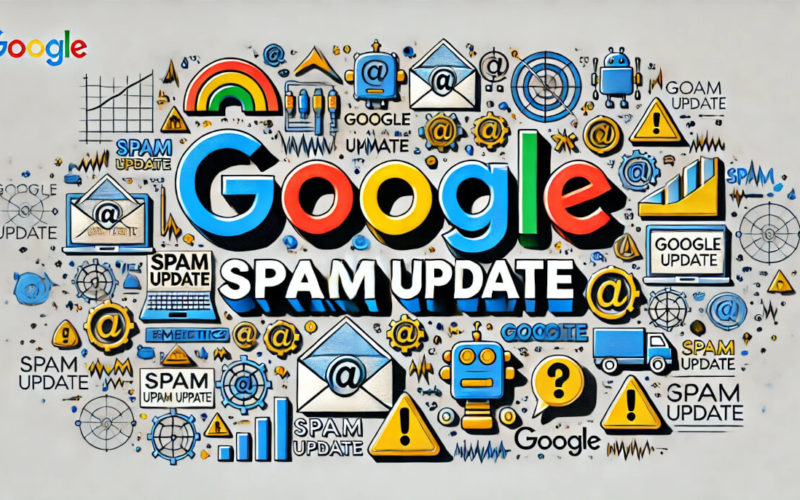Remarketing is a digital marketing strategy that focuses on displaying personalized ads to users who have previously interacted with a website or its associated app but did not complete the desired action. This technique allows businesses to re-engage people who have shown interest and turn that initial curiosity into a concrete action.
When applied correctly, remarketing can yield significant benefits, such as increasing conversions, improving ROI, and strengthening a company’s brand and reputation. Various platforms facilitate this process, including Google Ads and Meta Ads (formerly Facebook Ads), which provide advanced tools for tracking and segmenting different types of website visitors.
Introduction to Remarketing and Its Importance
Remarketing is simply a digital marketing strategy that involves displaying personalized ads to users who have previously interacted with a website or app but have not completed a desired action, such as making a purchase or subscribing.
Many businesses use this technique to re-engage potential customers who showed interest and turn that curiosity into action. Broadly speaking, when properly applied, remarketing can offer substantial benefits for companies, such as increased conversions, improved return on investment (ROI), and strengthened brand presence.
Remarketing is a digital marketing strategy that focuses on displaying personalized ads to users who have previously interacted with a website or its associated app but did not complete the desired action.
Remarketing and Retargeting… Do You Get Them Mixed Up?
No, of course, Remarketing and Retargeting are not the same, even though many sites use them interchangeably. Remarketing generally refers to ad campaigns based on data from customers who have already interacted with a company.
On the other hand, Retargeting focuses more on displaying ads to users based on their browsing behavior on other websites. Being similar doesn’t always mean they are the same, right?
How Does Remarketing Work?
Remarketing collects user data through cookies and tracking pixels, segmenting users into lists based on their behavior. It then executes personalized campaigns through platforms like Google Ads and Meta Ads. This process maximizes ad relevance and improves conversion rates.
User Data Collection
The remarketing process begins with collecting data from users who have interacted with a website or its associated app. This information is gathered through cookies and tracking pixels embedded in the site. These tools record user actions, such as pages visited, products viewed, and forms completed.
A clear example of this is Google Ads, which uses a remarketing tag to track website visitors, while Facebook, on the other hand, employs the Meta Pixel to collect data on interactions within its platform. In other words, it performs a similar function but within its own social media ecosystem.
Remarketing collects user data through cookies and tracking pixels, segmenting users into lists based on their behavior.
Creating Remarketing Lists
Once you have the data, the next step is to manage it by creating segmented remarketing lists, grouping users based on their behavior on the website. These lists may include:
- Visitors of a specific page.
- Users who added products to the cart but did not complete the purchase.
- People who visited the website in the last 30 days.
These lists allow advertisers to personalize ads for each segment, increasing the relevance and effectiveness of campaigns.
Executing Remarketing Campaigns
Once the data has been collected and organized, the next step is to create and execute the remarketing campaigns. This process includes:
- Set Up Google Ads: You need to access your Google Ads account and go to “Tools and Settings” > “Linked Accounts.” Once there, you must link your Google Analytics account to track and segment visitors effectively.
- Create Remarketing Lists: In Google Ads, navigate to the “Audiences” section. Here, you can create lists based on user behavior, such as visits to specific pages or cart abandonment.
- Design Personalized Ads: Use images and text that are relevant to each segment of your remarketing list. Make sure the ads are visually appealing and have a clear call to action.
- Set Up the Remarketing Campaign: Go to the menu and select “Campaigns” > “New Campaign.” At this stage, choose the campaign objective, such as “Sales” or “Website Traffic.” You can then select the campaign type (“Display” or “Search”) and configure essential details like budget and location.
- Implement the Remarketing Code: Make sure you have a remarketing code installed on your site to track visitors. Verify that the code is working correctly and collecting user data.
- Launch and Monitor the Campaign: Publish the campaign and closely track its performance. Ads, bids, and audiences can be adjusted based on the results and the campaign’s effectiveness.
Types of Remarketing
Now that we’ve explained what remarketing is, it’s important to understand the main types: standard, dynamic, and social media remarketing.
Standard remarketing
Standard remarketing involves displaying ads to users who have previously visited a website or interacted with a mobile app. This type of remarketing is effective for reminding users about products or services they viewed but didn’t purchase.
For example, a user who visits an online store and browses several products without making a purchase may later see ads for those products while browsing other websites.
Dynamic remarketing
Dynamic remarketing involves displaying personalized ads based on the products and/or services users have viewed on a website. It utilizes specific user behavior data to show the most relevant ads, including images and descriptions of the products they previously browsed.
For example, suppose a user visits an e-commerce site selling shoes but doesn’t complete the purchase. In this case, dynamic remarketing comes into play, displaying ads featuring the same models or similar ones when the user visits other websites.
Social media remarketing
Social media remarketing involves displaying ads to users who have interacted with a brand through social platforms like Facebook and Instagram. This type of remarketing is used to re-engage users who visited the brand’s profile, interacted with posts, or clicked on previous ads.
For example, if a user sees an Instagram post about a product but doesn’t purchase it, they may later see ads for that same product while scrolling through their Facebook or Instagram feed.
Advanced Remarketing Strategies
Are you trying to develop a remarketing strategy but facing challenges? Here are some tips and strategies to help you maximize your results:
Advanced Segmentation
Advanced segmentation allows you to group users based on shared characteristics, such as behavior, interests, or demographics, to deliver more relevant messages. To segment audiences effectively:
- Use Behavioral Data: Make sure to group users based on their actions on your website, such as pages visited, time spent on the site, and products added to the cart.
- Segment by Intent: Identify the user’s intent, whether they are searching for information, comparing products, or ready to make a purchase. This approach allows you to tailor your ads according to the stage of the sales funnel they are in.
Ad Personalization
Ad personalization enhances the relevance and effectiveness of remarketing campaigns. Here are some key tips to fully optimize your approach:
- Dynamic Ads: These will be extremely useful for displaying specific products that users have viewed on your website, automatically tailoring the ad content to each individual user.
- Personalized Messages: You can create specific messages for different audience segments, such as special offers for users who abandoned their cart or educational content for those in the research phase.
Integration with Other Marketing Strategies
Combining remarketing with other digital marketing tactics can significantly enhance your results:
- Email Marketing: Use remarketing alongside email campaigns to remind users about products they’ve viewed and offer additional incentives to complete their purchase.
- Social Media Marketing: Integrate your remarketing campaigns with social media strategies to keep your brand visible on the platforms users frequent.
- SEO and PPC: Complement your remarketing efforts with SEO and PPC strategies to attract new traffic and then re-engage those users with personalized ads.
Advantajes of remarketing
Remarketing is a strategy that offers multiple benefits for your project, including:
Higher Conversion Rate
Remarketing targets users who have already shown interest in your product or service, increasing the likelihood of conversion. Since they are already familiar with your brand, they are more likely to complete a purchase or take a desired action when they see personalized ads that remind them of their previous interest.
Studies show that returning visitors have a higher conversion probability compared to new visitors, demonstrating the effectiveness of remarketing in boosting conversion rates.
Cost-Effective Strategy
Remarketing is one of the most cost-effective marketing strategies because it targets users who have already shown interest in your site and products, reducing the cost per acquisition (CPA).
By focusing on a more qualified audience, resources are used more efficiently, leading to lower overall costs—though expenses will vary depending on the campaign’s scale, as with any marketing strategy.
Additionally, digital advertising platforms like Google Ads allow you to control your daily budget and adjust bids to maximize return on investment.
Better ROI
Remarketing improves return on investment (ROI) by targeting users with a higher likelihood of conversion. By keeping your brand visible and delivering relevant ads, you can maximize the value of each user interaction.
Since remarketing ads are highly personalized and precisely targeted, they typically achieve higher click-through rates (CTR) and conversion rates, leading to an overall better ROI for advertising campaigns.
Examples and Success Stories in Remarketing
There are successful remarketing cases worldwide across various industries, such as the following:
Google Ads
Many companies use Google Ads with personalized display ads to reconnect with users who previously viewed their products on their websites. Some examples of businesses that use this strategy include:
- HubSpot: This company uses its remarketing campaigns to address potential objections during the sales process.
- Best Buy: Their strategy focuses on reminding users that they still have items in their shopping cart.
- ShopBop: They use highly personalized banner ads, specifically showing users the items they have previously viewed on the website..
- Expedia: This company uses remarketing to create a sense of urgency, regularly launching last-minute offers to users who have already visited the site, offering up to 50% off on travel deals.
These strategies led to a 76% increase in CTR (Click-Through Rate) compared to non-targeted regular ads, resulting in a significant boost in conversions and ROI.
Meta Ads (Formerly Facebook Ads)
The renowned Japanese automaker Toyota heavily leveraged a Facebook Ads (now Meta Ads) campaign when launching its RAV4 Hybrid model in Italy in 2018. The campaign’s success was driven by extensive audience segmentation and high-quality audiovisual content, resulting in over 2,500 potential customers, with 59% requesting test drives of the vehicle.
Dynamic Remarketing
The company Trendyol, one of the largest mobile e-commerce platforms in Turkey, achieved a 70% increase in ROI by using dynamic remarketing for apps. The strategy focused on creating adaptable ads for:
- Re-engaging high-value users
- Driving more traffic and gaining customers
- Improving click-through rate (CTR) and conversion rate
- Boosting return on ad spend (ROAS)
The results were clear: a 140% increase in clicks, a 20% rise in conversion rate, and a 28% reduction in CPC (cost per click). Additionally, app traffic from Google tripled.
Common Remarketing Mistakes and How to Avoid Them
Just like in other areas of digital marketing, remarketing can lead to common mistakes, especially among those with little experience. We had the opportunity to consult our experts in PPC, SEM, and social media at MD Marketing Digital, and they shared the following insights:
Incorrect Segmentation
One of the most common mistakes in remarketing is incorrect segmentation. This happens when ads are too generic and not properly targeted to a specific audience. The solution is to carefully segment your audience based on behaviors and specific characteristics, ensuring that ads are relevant to each group.
A frequent mistake is running the same ad for all users, which wastes valuable differentiated data. Instead, it’s better to create segments such as “Purchasers” (users who have already bought), “No Action Visitors” (users who left without taking any action), and “Cart Abandoners” (users who abandoned their cart).
Advertising frequency
Another common issue is ad overexposure, which can lead to clear user fatigue. To avoid this, it is important to control the frequency at which ads are shown to the same person.
Using ad frequency tools and setting clear limits can help maintain a proper balance and avoid saturation.
Unattractive creativity
A lack of creativity impacts nearly every aspect of digital marketing. In this case, it may lead to a decrease in user engagement due to lack of interest.
Ads should be visually appealing and capture the user’s attention immediately. To achieve this, high-quality images should be used (and, if possible, in newer formats such as WebP or AVIF for websites), clear messages, and compelling calls to action. Additionally, it is important to test different ad versions to see which ones resonate best with the audience.
Are you having trouble running your remarketing campaign? At MD, we can help you!
Remarketing is a powerful tool that, when applied correctly, can transform the way a company interacts with potential customers. By targeting personalized ads to users who have already shown interest in your products or services, you can significantly increase conversion rates and optimize your return on investment through platforms like Google or Meta Ads.
Are you trying to create your remarketing campaign but facing difficulties? It’s clear that developing such strategies is not easy, and in many cases, it’s important to have assistance from professionals like the ones on our team at MD Marketing Digital. We can help you focus your campaign and recapture your ideal customers, so you can boost your sales and accelerate your ROI.
Are you interested? Don’t hesitate to contact us!
- Google Core Update: History of Major Updates - December 17, 2024
- How to Create an Effective SEO Strategy in 2024? - November 8, 2024
- Google Helpful Content Update: A History of Major Google Updates - August 2, 2024
¿Qué te pareció este artículo?
What do you think about this post?




